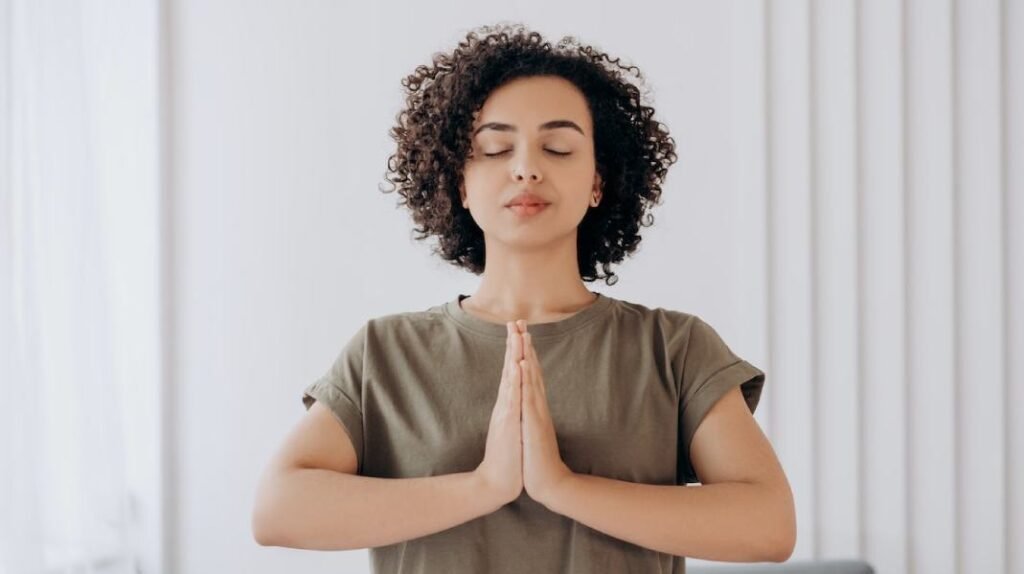Are you tired of feeling dizzy and disoriented? Well, here’s some good news for you: there’s a simple breathing exercise for dizziness that can help alleviate those lightheaded spells. Actually there’s more than one, there are a few. By focusing on your breath and engaging in deep, controlled inhales and exhales, this exercise encourages a sense of calm and balance within your body. So, if you’re ready to conquer your dizziness and regain your sense of stability, let’s dive into all the different breathing exercises for dizziness and see which one will work for you.
Understanding Dizziness
Dizziness is a common sensation that many people experience at some point in their lives. It refers to a feeling of lightheadedness, unsteadiness, or a spinning sensation. Dizziness can be caused by a variety of factors, including problems with the inner ear, medications, low blood pressure, dehydration, and anxiety. Understanding the causes and types of dizziness is the first step in finding effective ways to manage this uncomfortable symptom.
Causes of Dizziness
There are several potential causes of dizziness. One common cause is inner ear problems, such as vestibular migraine, Meniere’s disease, or benign paroxysmal positional vertigo (BPPV). These conditions can disrupt the balance signals sent to the brain and lead to feelings of dizziness. Additionally, dizziness can be a side effect of certain medications, such as those prescribed for high blood pressure or anxiety. Other potential causes include low blood pressure, dehydration, anxiety or panic disorders, and hyperventilation.
Types of Dizziness
Dizziness can manifest in different ways, and understanding the different types can help identify the underlying cause and appropriate management techniques. Vertigo is a type of dizziness characterized by a spinning or whirling sensation. It is often associated with inner ear issues and can be triggered by changes in head position. Disequilibrium refers to a general feeling of unsteadiness or imbalance, often accompanied by clumsiness or difficulty walking. Presyncope is a feeling of almost fainting or losing consciousness, typically caused by a drop in blood pressure. Finally, nonspecific dizziness is a broad term that encompasses the sensation of lightheadedness or unsteadiness without a clear cause.

The Importance of Breathing
The way we breathe plays a significant role in our overall well-being, including the management of dizziness. Proper breathing techniques can help regulate our autonomic nervous system, which controls many bodily functions, including blood pressure, heart rate, and digestion. By focusing on our breath, we can alleviate dizziness and promote a sense of calm and stability.
Effects of Breathing on Dizziness
Breathing has a direct impact on our physiology, particularly the regulation of carbon dioxide levels in our bloodstream. Shallow or rapid breathing can lead to a respiratory imbalance, causing symptoms such as dizziness, lightheadedness, and shortness of breath. By practicing deep, slow breathing, we can maintain a proper balance of oxygen and carbon dioxide, promoting relaxation and reducing dizziness.
Benefits of Deep Breathing
Deep breathing, also known as Diaphragmatic breathing, has numerous benefits for dizziness management. It helps activate the body’s natural relaxation response, reducing stress and anxiety that can contribute to dizziness. Deep breathing also enhances oxygenation and improves blood circulation, promoting overall health and well-being. Regular practice of deep breathing exercises can increase lung capacity, strengthen the respiratory muscles, and improve cardiovascular health.
Breathing Techniques for Dizziness
There are several effective breathing techniques that can help alleviate dizziness. By incorporating these techniques into your daily routine, you can experience a sense of calm and stability while reducing the frequency and severity of dizziness episodes.
Diaphragmatic Breathing
Diaphragmatic breathing involves deep inhalation and exhalation, engaging the diaphragm muscle located below the lungs. To practice diaphragmatic breathing, sit or lie in a comfortable position. Place one hand on your chest and the other on your abdomen. Take a slow, deep breath in through your nose, allowing your abdomen to rise as you fill your lungs with air. Exhale slowly through your mouth, feeling your abdomen deflate. Focus on breathing deeply from your diaphragm rather than shallow chest breaths. Repeat this exercise for several minutes, gradually increasing the duration over time.
Box Breathing
Box breathing, also known as square breathing, is a simple yet effective technique for grounding and calming the body. To practice box breathing, visualize the shape of a square. Inhale deeply for a count of four, filling your lungs with air. Hold your breath for a count of four. Exhale slowly for a count of four, fully emptying your lungs. Finally, hold your breath again for a count of four before starting the cycle again. Repeat this sequence for several minutes, focusing on the rhythm of your breath and the visualization of the square.
4-7-8 Breathing
The 4-7-8 breathing technique, popularized by Dr. Andrew Weil, is a simple method for inducing relaxation and promoting better sleep. To practice 4-7-8 breathing, sit or lie down in a comfortable position. Place the tip of your tongue against the ridge of tissue behind your upper front teeth. Close your mouth and inhale deeply through your nose, silently counting to four. Hold your breath for a count of seven. Exhale forcefully through your mouth, making a whooshing sound, while mentally counting to eight. Repeat this cycle three more times, gradually increasing the number of repetitions as you become more comfortable with the technique.
Alternate Nostril Breathing
Alternate nostril breathing, also known as Nadi Sodhana, is a yogic breathing technique that balances the flow of energy in the body and calms the mind. To practice alternate nostril breathing, sit in a comfortable position with your spine straight. Use your right thumb to close your right nostril, and inhale deeply through your left nostril. Close your left nostril with your right ring finger, and exhale through your right nostril. Inhale through your right nostril, then close it with your right thumb. Open your left nostril, and exhale through it. Continue this pattern, alternating between nostrils, for several minutes.
Resonance Breathing
Resonance breathing involves matching your breathing rate to a specific resonant frequency, typically around five to six breaths per minute. To practice resonance breathing, find a comfortable rhythm of inhaling and exhaling that feels natural to you. Count the duration of one inhalation and one exhalation, aiming for each to take around 10 to 12 seconds. As you continue practicing, try to gradually decrease the duration to achieve the desired resonant frequency. Use a timer or a metronome to help maintain the consistent pace.

Step-by-Step Guide to Breathing Exercises
- Find a quiet and comfortable space where you can practice your breathing exercises without distractions.
- Sit or lie down in a comfortable position, ensuring that your back is straight and your body is fully supported.
- Begin by taking a few deep breaths in through your nose and out through your mouth to relax your body and prepare for the exercises.
- Choose one of the breathing techniques mentioned earlier, such as diaphragmatic breathing or box breathing, that resonates with you.
- Start by practicing the selected technique for a few minutes each day, gradually increasing the duration as you become more comfortable.
- Focus on the sensations of your breath, noticing the rise and fall of your abdomen or the airflow through your nostrils.
- If your mind starts to wander, gently bring your attention back to your breath and the present moment.
- Practice consistency by incorporating breathing exercises into your daily routine. Consider setting aside dedicated time for these exercises to establish a habit.
- Monitor your progress and observe any changes in your dizziness symptoms over time. Adjust your breathing exercises as needed to best address your individual needs.
Precautions and Tips
While breathing exercises for dizziness can be highly beneficial, it’s essential to keep a few precautions and tips in mind for a safe and effective practice.
Consulting a Healthcare Professional
If you experience chronic or severe dizziness, it is crucial to consult a healthcare professional, such as a doctor or a specialist. They can help identify the underlying cause of your dizziness and provide personalized guidance on managing your symptoms.
Practice in a Safe Environment
When practicing breathing exercises, ensure that you are in a safe environment where you can fully focus on the exercises without any distractions or potential hazards. Consider using a comfortable chair or cushion, preferably in a quiet room.
Do Not Hyperventilate
While deep breathing is beneficial, be cautious not to hyperventilate, which can actually exacerbate dizziness. Maintain a steady and controlled pace, ensuring that you are not breathing too quickly or forcefully.
Be Consistent
Consistency is key when it comes to breathing exercises. To experience the full benefits, incorporate these exercises into your daily routine. Whether it’s in the morning, before bed, or during breaks throughout the day, find a time that works best for you and commit to regular practice.
Use Breathing Exercises as a Complementary Treatment
Breathing exercises should be seen as a complementary treatment method, not a sole solution. While they can assist in managing dizziness, it’s important to address any underlying medical conditions and follow the guidance of healthcare professionals.
In conclusion, understanding dizziness and its causes is crucial for effective management. Incorporating proper breathing techniques into your daily routine can provide significant relief from dizziness symptoms. By practicing diaphragmatic breathing, box breathing, 4-7-8 breathing, alternate nostril breathing, and resonance breathing, you can attain a sense of calm and stability while reducing the frequency and severity of dizziness episodes. Remember to consult a healthcare professional, practice in a safe environment, avoid hyperventilation, be consistent with your practice, and use breathing exercises as a complementary treatment. Start incorporating these breathing techniques into your routine and experience the positive impact they can have on managing dizziness.

